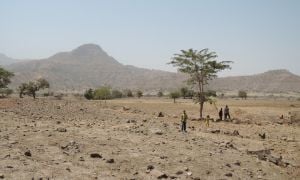
Read our 2024 annual report

Knowledge Hub
Global Hunger Index 2014 report
This year's Global Hunger Index report shows that, since 1990, progress has been made in reducing hunger. However, global hunger levels remain unacceptably high.

This year's report documents that sixteen countries have levels of hunger that are described as “alarming” or “extremely alarming”.
With one more year before the 2015 deadline for achieving the Millennium Development Goals, the 2014 Global Hunger Index report offers a multifaceted overview of global hunger that brings new insights to the global debate on where to focus efforts in the fight against hunger and malnutrition. The state of hunger in developing countries as a group has improved since 1990, falling by 39 percent, according to the 2014 GHI.
Despite progress made, the level of hunger in the world is still “serious,” with 805 million people continuing to go hungry, according to estimates by the Food and Agriculture Organization of the United Nations. The global average obscures dramatic differences across regions and countries. Regionally, the highest GHI scores—and therefore the highest hunger levels—are in Africa south of the Sahara and South Asia, which have also experienced the greatest absolute improvements since 2005. South Asia saw the steepest absolute decline in GHI scores since 1990.
Progress in addressing child underweight was the main factor behind the improved GHI score for the region since 1990. From the 1990 GHI to the 2014 GHI, 26 countries reduced their scores by 50 percent or more. In terms of absolute progress, comparing the 1990 GHI and the 2014 GHI, Angola, Bangladesh, Cambodia, Chad, Ghana, Malawi, Niger, Rwanda, Thailand, and Vietnam saw the biggest improvements in scores. Levels of hunger are “extremely alarming” or “alarming” in 16 countries, with Burundi and Eritrea both classified as “extremely alarming,” according to the 2014 GHI. Most of the countries with “alarming” GHI scores are in Africa south of the Sahara.




